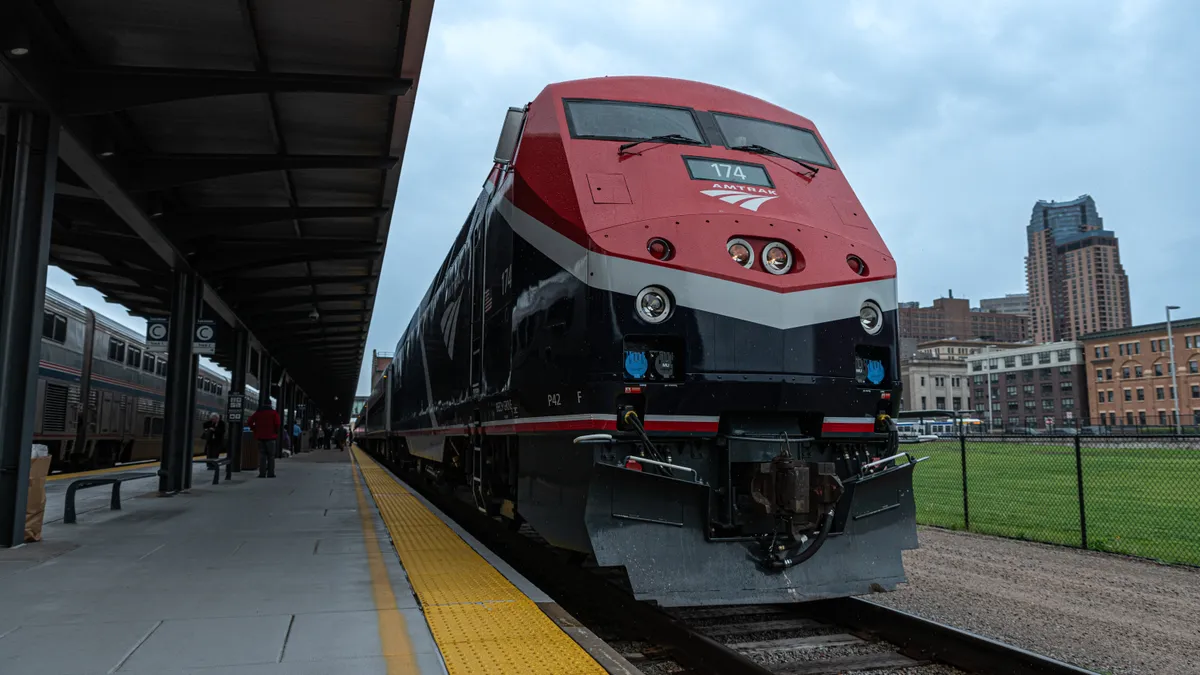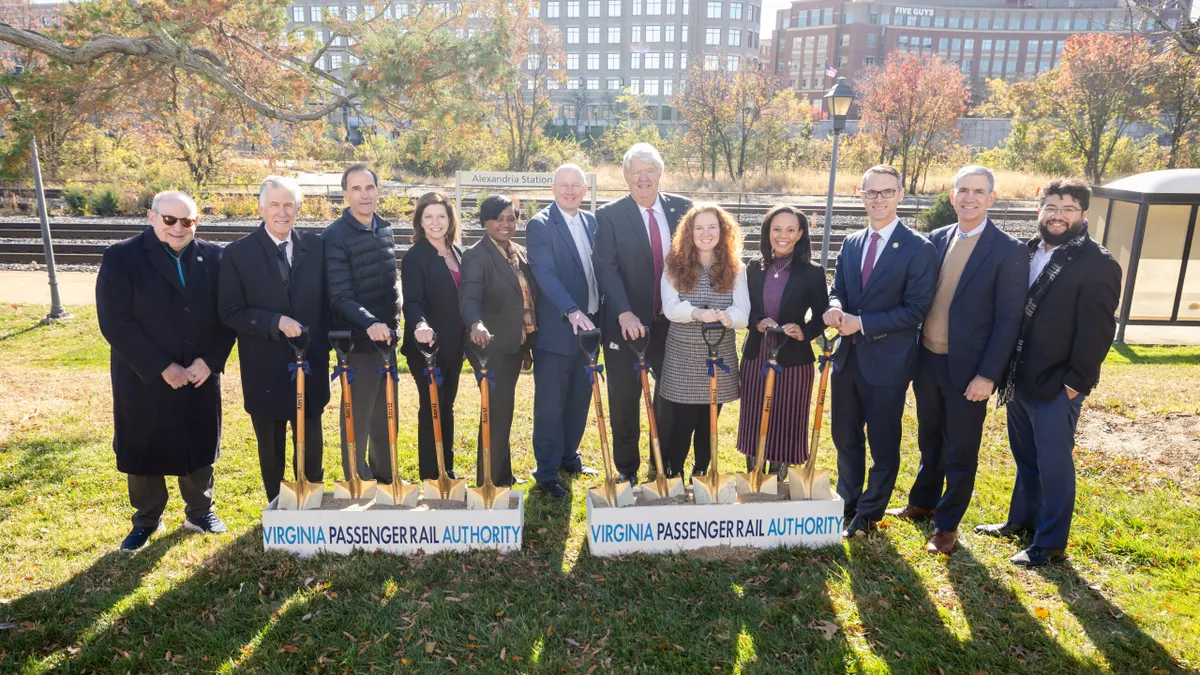Commuters are often faced with an all-too-familiar scenario of being caught in a car in the midst of rush-hour traffic on their daily journeys to and from work. With each minute that ticks by comes the associated stress of wasting time. But what if there were a way for workers to get more done on their commutes?
Increased work opportunity and productivity is one of the many ways autonomous vehicles (AVs) present promise and could revolutionize not only the mobility sector but also a variety of others including labor. AVs might not just transport passengers to work, but might also become a place to work.
Morgan Stanley predicts that AV-related productivity gains in the United States will add up to $507 billion annually, and other related AV benefits — such as reducing traffic accidents caused by human driver error — will contribute to a total of $1.3 trillion in annual savings to the U.S. economy.
Concerns have been raised about how automation will contribute to job losses in vehicle-dependent industries such as trucking, delivery services and taxi or ride-hailing services. But a report about AVs and the American workforce from Securing America's Future Energy (SAFE) says, "AVs will create new jobs that will, in time, replace jobs eliminated by automation."
Industries such as telecommunications, software development, media and insurance all will experience disruption, but also greater opportunities, the Morgan Stanley report indicates.
And workers will need to adapt as new opportunities arise. "When autonomous vehicles take over the driving, drivers will need to retool their skill set to relevant opportunities that this new environment creates," says research from EY.
"I think there are many different kinds of potential businesses and the imagination is the limit."

Marjory Blumenthal
Director of the Science, Technology and Policy Program, RAND Corp.
Generally speaking, AVs are believed to hold business potential in two major ways: increasing efficiencies for a worker occupying a vehicle and providing a fully- or almost fully-automated service.
On the efficiency side, an obvious benefit is the ability to perform traditional office work or organize deliveries while being transported. But a less obvious benefit exists for employees who use vehicles as an integral part of their job, especially those who have to make multiple stops. Such employees could include "an insurance agent... or photographer or some other profession that doesn't want to worry about parking" and must remain on the move for optimal efficiency and productivity, said Marjory Blumenthal, director of the Science, Technology and Policy Program at RAND Corporation.
Some companies — including Ford and Domino's — already have forged partnerships to test fully automated vehicle deliveries and determine how far product recipients are willing to travel to pick up their items. That ties in with the other major AV-centric business model pertaining to "different kinds of services that a person would go up to the vehicle to access," Blumenthal said. Such services could be a fully automated roving gym, junk hauler or food truck.
"I think there are many different kinds of potential businesses and the imagination is the limit," Blumenthal said.
Perfecting the tech
Although the sea of possibilities for AV-centric businesses is exciting to ponder, experts signal that such advances aren't imminent because driverless vehicle technology basics have yet to be perfected.
"People often separate 'automated' from 'connected' vehicles," but AVs work on connected infrastructure, Blumenthal said. Getting AVs on public roads, much less developing AV-centric businesses, will require greater municipal infrastructure investments and significant testing.
"I think what we're going to see, given all the challenges we have improving infrastructure... is that the vehicles will be out there and there will be experimentation before the infrastructure fully catches up," Blumenthal said.
Already, the U.S. Department of Transportation and various organizations provide funding for connected vehicle testing. As the testing continues and progresses, "there may be pilot programs that combine all of [these aspects] together," including testing AV-centric businesses, Blumenthal said.
In addition to municipal infrastructure, the driverless vehicles themselves must advance in terms of technology and safety before AV-centric businesses become mainstream. Currently, vehicle automation is ranked on a scale of 0 to 5, with 0 indicating "no automation" and 5 indicating "full automation." Levels 1 through 4 deal with various driver assistance capabilities as well as drivers having the option to take full control of an autonomous vehicle. Some industry experts contend that AV-centric businesses will not thrive in the lower levels of vehicle automation.
"In levels 1 to 4 of autonomous driving, we are unlikely to see drastic new types of in-car behavior and activity. But once we achieve full autonomy with level 5, vehicles will become like any other place — just a mobile room, where normal rules apply," said Ronny Cohen, CEO and co-founder of VayaVision, a developer of 3D perception systems for AVs.
Those "normal rules" provide a grounding reminder among the seemingly limitless AV-centric business possibilities: "There are also going to be licensing and permitting and tax issues that are going to come up and shape what happens," Blumenthal said.
The 'rules' of running a business
Businesses of all kinds are subject to local, federal and state governance, and those operated out of AVs likely will be no different. For example, federal, state and local governments all regulate certain aspects of alcohol sales and consumption. Someone trying to launch a roving bar business in AVs would need to remain compliant with existing alcohol regulations at all levels, plus any new rules that might emerge related specifically to AV-based businesses.
A number of professions need special business licenses to operate within a municipality. That's true for cosmetologists, veterinarians, appraisers and fitness facility employees, among others. Municipalities that allow AV-centric businesses will have to figure out how to handle those licenses and other topics covered by traditional permitting processes such as zoning, land use and fire safety.
AV-based business operators also will have to consider insurance and liability implications, such as if someone gets hurt by or inside a vehicle they own or lease. EY researchers predict "a revolution in the legal and regulatory environment as laws and norms developed for drivers are adapted for autonomous vehicles."
A lot of the same responsibility for customer safety that brick-and-mortar businesses have to contend with likely will apply to AV-based businesses as well.
"If it's a gym in a truck... and some of the gym equipment malfunctions and a person is injured, the liability would be the same as it is in a stationary exercise area," said Robert Rabin, professor at Stanford Law School. Similarly, in the case of a roving bar in an AV, "if there's a fight between two individuals in the vehicle who are drunk... that owner or lessee of the vehicle would have the same responsibility for having failed to break up a fight as they would in a bar or cocktail lounge. The fact that it's in a vehicle shouldn't make a difference," Rabin said.
An eye toward equity
When considering scenarios that affect workforce growth and loss, such as with the advent of AV-based businesses, experts suggest turning a keen eye toward equity. They recommend drawing a roadmap for AV-based businesses that ensures all residents can benefit from the innovations, and that the benefits can be shared broadly across a city.
The SAFE report points out that AVs could improve access to job markets in economically depressed regions. AV-based businesses also could bring new opportunities to underserved areas. But cities should plan for equitable opportunities and access in advance, experts say.
"Government has a role to play in putting a finger on the scale to adjust the balance of who benefits," said Blumenthal. "The answer begins with the conditions that a city government sets for allowing testing in a city and allowing the introduction of new services."
For example, a number of cities have put equity at the forefront when rolling out dockless bike-share and scooter programs. Chicago is among those that introduced pilot programs for dockless bikes only in neighborhoods underserved by traditional transit, not those with ample resources.
"Cities can influence where that gear is distributed and who has access to it. By extension, they should also be able to say if a [new AV-centric business] wants to operate in a more affluent area, you also have to operate in a more challenged area," Blumenthal said.
There is "no simple answer" about how best to intentionally implement an equitable system, but "city government can help to encourage some of these new applications of technology in those areas, especially if they can be provided affordably," she said.




















